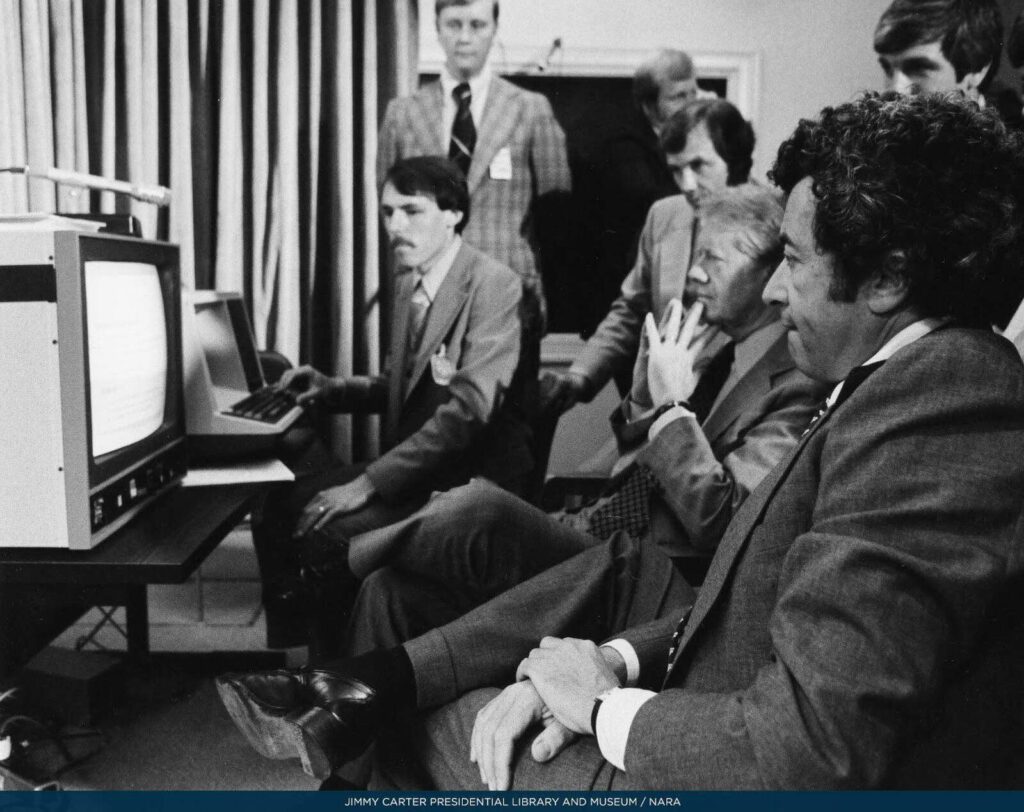By the late 1970s, the federal government had been using computers for decades, and IBM’s mainframes had helped NASA astronauts reach the moon. However, there were few minicomputers or early personal computers in federal offices. But did you know which US President oversaw the installation of the first computers in the White House?
President Jimmy Carter oversaw the installation of the first computers in the White House in 1978, including a Hewlett-Packard 3000, a water-cooled IBM laser printer, and a Xerox Alto desktop computer for the Oval Office. In 1981, Reagan removed the Xerox Alto.
The First Computer in The White House
According to figures from the General Services Administration and compiled in 1979 by the National Bureau of Standards, the number of computers in use in the federal government increased from about 2,400 in 1965 to slightly more than 11,000 in 1977, which later became the National Institute of Standards and Technology.
During Jimmy Carter’s presidency, the White House finally got a computer, a sign of the times. According to the White House Historical Association, the Carter administration “began the task of automating the White House with computers” in 1978.
While the United States government had funded many computing projects dating back to the 1940s, it wasn’t until the Carter administration that a computer was installed in the White House. Employees were given terminals to connect to a shared Hewlett-Packard HP3000 computer, and the technology department purchased a Xerox Alto for the Oval Office.
Computer History Museum
According to the White House Historical Association, early uses of the Hewlett-Packard 3000 included assembling databases, tracking correspondence, developing a press release system, and compiling issues and concerns of Congress. (Source: Federal Technology Magazine)
The Hewlett-Packard 3000
According to Becoming Hewlett Packard: Why Strategic Leadership Matters, by Robert Burgelman, Webb McKinney, and Philip Meza, Hewlett-Packard began developing the HP 3000 in 1968, and it was HP’s first minicomputer focused on the commercial data processing market. The HP 3000 was a versatile minicomputer that performed broader general-purpose computations than its rivals.
According to Managing Multivendor Networks by John Enck and Dan Blacharski, the HP 3000 was a 16-bit business minicomputer. Instead of the RTE or DOS operating systems, the machine ran on a custom OS known as Multi-Programming Executive, which lasted for about 25 years, according to the HP Computer Museum.
The HP 3000, according to Enck and Blacharski, was not designed to run special interfaces or highly complex, concurrent hardware activities but rather to accommodate concurrent users working on administrative and business applications. Each user had a session environment from which they worked independently of other users. As a result, it was ideal for settings such as the White House, where multiple staffers could use the machines to work on separate tasks.
The HP 3000, like many other minicomputers of the time, was eventually superseded by newer, faster, and more capable machines and by the widespread adoption of PCs in the late 1980s and early 1990s. (Source: Federal Technology Magazine)
Image from OurMidland
